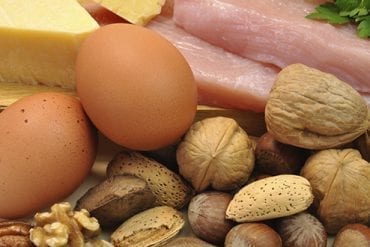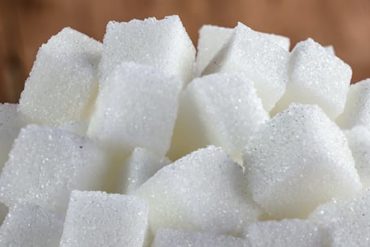Starchy foods include cereals, pasta, bread and potatoes, and are a very important part of maintaining a healthy diet. Wholegrain ranges should be chosen whenever possible.
How much is needed?
Around a third of the food that we consume each day is made up of starch, but most people still don’t get enough starch products into their daily diets.
Starchy foods represent a good source of energy and are also the main source of a range of nutrients in our diet. Fibre, iron, B vitamins, and calcium are all found in starchy foods.
Some believe that starchy foods are fattening and can increase weight, however they contain less than half the calories of fat. Just remember to watch out for the added fats used for cooking and serving as this is what increases the calorie content. If your weight is a concern then try and choose wholegrain varieties.
Wholegrain foods contain more fibre and other nutrients than white or refined starchy foods. We also digest wholegrain foods more slowly so they can help make us feel full for longer.
Low-carb diets
These diets usually include cutting out most starchy foods and have become very popular. But by cutting them out, or any food group, you will be missing out on a range of nutrients which can be bad for your health.
Low-carbohydrate diets are usually high in fat, especially saturated fat, and could increase the risk of coronary heart disease developing. Following a diet of this sort will also reduce the amount of fruit and veg and fibre you consume, all of which are essential for good health.
When it comes to starchy foods try and base your meals around them (they need to make up 1/3 of your diet) instead of avoiding them.
Fibre
Foods that are rich in fibre are very healthy and should be included in your daily diet. They include brown rice, peas, lentils, wholegrain bread, pasta, seeds, fruit, grains and vegetables. Fibre can be split into two groups: insoluble & soluble.
Insoluble fibre
This type of fibre cannot be digested by the body and so it passes through the gut and helps other food and waste products pass through more comfortably.
Insoluble fibre helps prevent constipation and maintains healthy bowels. Foods that are rich in this type of fibre are more bulky and therefore make you feel fuller.
Foods rich in this type include; Brown rice, wholegrain rice, wholegrain breakfast cereals and fruit and vegetables.
Soluble fibre
This type of fibre can be partially digested and can help to lower the levels of cholesterol in the blood.
Foods rich in this type include oats and pulses such as beans and lentils.
Tips for eating more starchy foods and fibre
Try to eat more of the following in order to increase the amount of fibre in your diet:
- Bread – wholegrain, brown, granary, seedy, pitta bread, chapattis, bagels, tortillas and roti
- Potatoes – plaintain, sweet potato and yam
- Squash, breadfruit and cassava
- Wholegrain cereals, especially porridge
- Beans, peas and lentils
- Couscous, bulgar wheat, maize and cornmeal
- Brown rice
- Pasta
Rice and grains
Rice and grain are both great choices as starchy foods, as they produce energy, are low in fat, and come priced at good value.
Rice and grains contain a good source of protein, which helps the body grow and repair itself, some fibre to help get rid of waste inside the body, and B vitamins, which help the body to function properly.
The varieties to choose from are:
- All types of rice – basmati, brown, long grain, quick cook, abborio, wild and short grain
- Bulgar wheat
- Couscous
Remember that there are few important things to consider when storing and reheating rice and grains, as any cooked rice and grains left at room temperature can produce bacteria. The bacteria can multiply and produce toxins that may lead to diarrhoea and vomiting:
- Serve rice and grains as soon as they’ve been cooked, or if not possible, serve within an hour after cooking and keep refrigerated until reheating.
- Rice and grains that have been left out overnight at room temperature should be thrown away.
- Do not keep any cooked rice or grains for longer than two weeks and don’t reheat them more than once. Any cold rice or grain salads should be eaten by the ‘use by date’ and kept under ‘storage instructions’.
Bread
Bread has been around for centuries and nowadays there are over 200 types of bread available in the UK alone, ranging from baguette to tortillas and pitta to ciabatta.
Bread is a starchy food and contains a lot of fibre and it should be included as part of a balanced daily diet, especially wholemeal, wholegrain, brown, granary and seedy bread.
Along with pasta, rice and potatoes these starchy foods should make up around 1/3 of our diet.
Vitamins B, E, fibre and a wide range of minerals can be found in brown, wholegrain and wholemeal bread, along with white bread, although it contains less fibre.
Some people try and avoid bread from their diets as they think bread contains a lot of carbohydrates and is therefore fattening, or because they are allergic to wheat. Before cutting out any type of food from your diet it is very important to consult with your GP.




